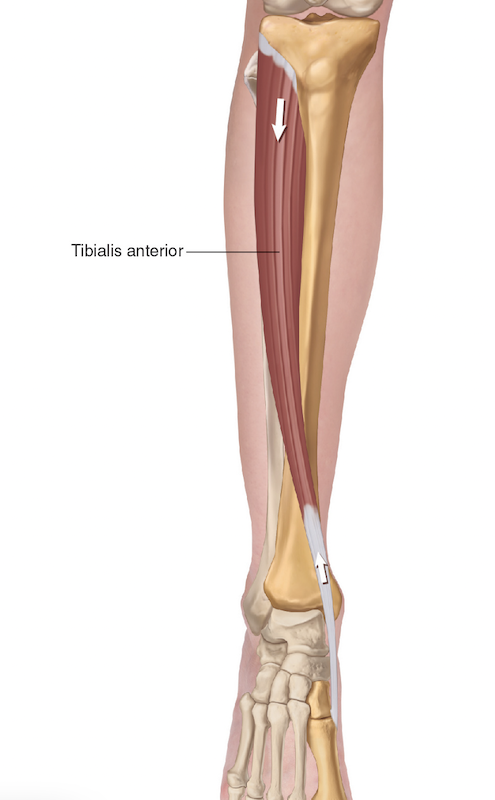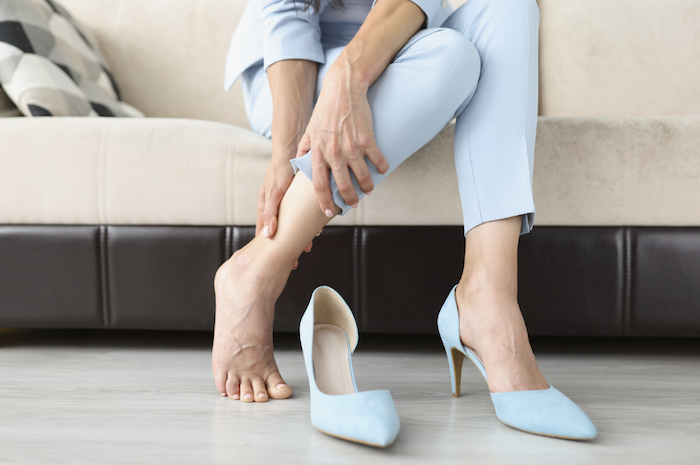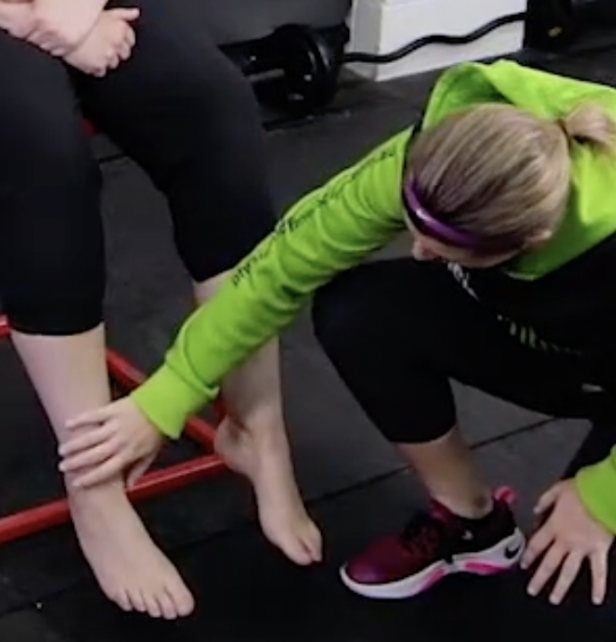Tibialis Anterior: An Overview of Symptoms, Causes & Treatments
Our feet and ankles are essential for daily activities such as walking, running and jumping. So let’s sort out our Tibialis Anterior problems. It’s common nowadays to wear tight or unsupportive footwear such as high heels, thongs or trendy shoes that can contribute to injury, especially as we get older.
Unfortunately, these fashion trends can lead to a range of issues, with the tendons at the top of our feet often bearing the brunt of the impact. In some cases, these tendons can become exceedingly taut, potentially causing strain that extends up to the tibialis anterior muscle.
What is the Tibialis Anterior and where is it located?
the outer side of the ‘shin’ bone and gradually gets thinner as it gets closer to the ankle where it transitions into a tendon.
This muscle is primarily responsible for flexing the foot upwards (dorsiflexion) and facilitating smooth, balanced steps during walking or running which is what prevents people from tripping as it helps lift the toes up as you walk/run.
How do the Foot and Ankle connect to the Tibialis Anterior?
Tendons are made up of fibrous connective tissue which are designed to connect muscle to bone.
The tibialis anterior tendon originates from the lower part of the tibialis anterior muscle, goes across the front of the ankle/top of the foot and connects to the base of the first metatarsal which is on the inside of the foot close the the ankle.
This intricate connection facilitates the muscle’s role in foot dorsiflexion and contributes to our overall mobility and stability.


How tight, uncomfortable and high heeled footwear can effect the Tibialis Anterior
Tight, uncomfortable, and high-heeled footwear can significantly impact the health of the Tibialis Anterior muscle and tendon. Such footwear choices, often favoured for their aesthetic appeal, can lead to issues like muscle tightness, pain and Tibialis Anterior tendonitis.
Moreover, wearing shoes that are too tight or secured with tight strapping or laces can exacerbate this issue.
The compression and stress imposed on the tendon can lead to the development of micro-tears, prompting the body’s inflammatory response, which ultimately culminates in tendinopathy. Therefore, choosing comfortable and properly fitted footwear is crucial to maintaining the health and functionality of the Tibialis Anterior muscle and tendon.
This condition doesn’t discriminate by age and can affect a wide range of individuals, particularly those who engage in active pursuits or high-impact activities that put substantial stress on the foot.
What are the signs of Tibialis Anterior?
Individuals afflicted by tibialis anterior injuries often encounter various symptoms. They may experience pain originating from the front of the ankle or even perceive pain radiating across the top of the foot.
Some might notice the development of a palpable lump in that region, while others simply suffer from localized pain within the tibialis anterior muscle itself. The signs often include:
- Aggravation of pain with heightened physical activity, notably during running or uphill walking.
- Pain, tenderness, and occasional swelling at the juncture of the front ankle and the foot.
- Discomfort during ankle movements, particularly when flexing the foot upward or turning it inward.
How to treat Tibialis Anterior
Treating Tibialis Anterior issues requires a multi-faceted approach aimed at alleviating pain and promoting healing.
One primary method is physiotherapy, where therapists employ targeted techniques to address the problem.
This includes locating tight spots in the Tibialis Anterior muscle by running their thumb down the muscle and applying pressure using their thumb to massage out the ‘knots’. Simultaneously, they perform plantar flexion (pressing the foot downward) which aids in releasing tension.
Stretching exercises are also beneficial, helping to enhance flexibility and alleviate strain on the tendon.
Over the counter pain relief such as Non-steroidal anti-inflammatory drugs (NSAIDs) can be used to manage pain and reduce inflammation in the recovery period. Ensuring to always rest, ice, compress (if necessary) and elevate an injury when it happens to facilitate recovery.
By combining these strategies, individuals can effectively address Tibialis Anterior issues, alleviate symptoms, and foster the healing process.

How do you recover from anterior tibialis?
Recovery from anterior tibialis issues is a process that requires time and a combination of therapeutic and preventive measures.
Physiotherapy is beneficial in providing relief as it involves targeted exercises and techniques to alleviate pain, strengthen the affected muscle, and improve overall function.
The use of supportive shoewear or in some cases orthotics, whether customized or over-the-counter, can reduce strain on the anterior tibialis during activities.
How long does it take for a tibialis anterior strain to heal?
Depending on how serious the injury and how proactive the person is with their recovery it can take anywhere between 3-12 weeks to heal from a tibialis anterior strain.
How can I improve my tibialis anterior?
As we age, our muscle strength tends to diminish, and this effect is particularly pronounced in the muscles surrounding the ankle joint. These muscles play an important role in maintaining balance and stability.
Doing strengthening exercises targeting the tibialis anterior muscle can serve as a protective measure against falls, enhance overall balance, reduce injury when engaging in activities and potentially alleviate discomfort associated with conditions such as arthritis and tendonitis.
Exercises that help to strengthen the tibialis anterior
Here are 2 exercises that help to strengthen the tibialis anterior by isolating the muscle.
These should be done 2-3 times per day for at least 10 repetitions:
Single leg calf raises
- Stand facing a wall about ½-1 foot away from the wall.
- Using your fingertips against the wall to help balance, stand on one foot.
- Then slowly lift your heel off the ground pushing off with the pressure in the ball of the foot and big toe (make sure you maintain ankle stability).
- Once the heel has been lifted up, slowly lower it down until your heel is back on the ground.
- Continue for 10 repetitions then switch to the other foot.
Wall Ankle Dorsiflexion
This particular workout effectively bolsters the tibialis anterior muscle as it engages in resistance against gravity during the upward movement of your ankles, promoting dorsiflexion.
- Position yourself with your back against a wall and ensure that the balls of your feet are resting flat on the floor.
- Then lift your feet so that your toes point to the roof whilst your heels remain on the ground.
- Maintain this position for a duration of five seconds before gently lowering your toes back down.
- Repeat 10 times and practice 2-3 times per day, increasing the repetitions as you get better.
Here at Physio and Fitness Clinic, we can assist you with your sports injuries. Make an appointment with a physio today.
